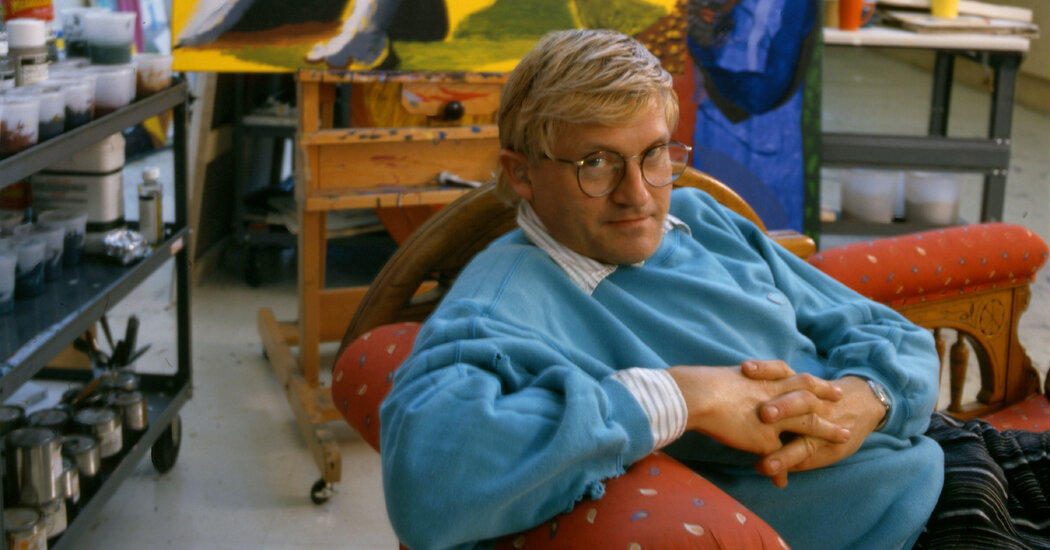Trump’s Ambitious Peace Strategy for Ukraine
One of Donald Trump’s pivotal campaign promises during his election journey was to swiftly conclude the ongoing war in Ukraine. His audacious assertion that he could resolve this complex issue in less than 24 hours was met with considerable skepticism. Yet, just four weeks into his presidency, there are tangible signs of progress towards a potential deal.
However, the specifics of this agreement remain vague, and the long-term implications of Trump’s decisive negotiating style are difficult to foresee. Observers express concern that the agreement might be detrimental to Ukraine, primarily driven by the urgency to reach a conclusion rather than ensuring equitable terms. Despite his brief tenure in office, Trump has managed to reinvigorate dialogue between Russia and the United States, compel Ukraine to acknowledge the necessity of making concessions, encourage European Union leaders to enhance defense expenditures, and even facilitate an agreement with Kyiv regarding the nation’s rare minerals, which President Zelensky is anticipated to endorse shortly.
“I mean, that’s what I do. I do deals. My entire life revolves around making deals. It’s all I understand,” Trump stated during a press conference with French President Emmanuel Macron. While many were bewildered and even incensed by Trump’s negotiating tactics early in his administration, a growing alignment among world leaders with his demands indicates that his approach may be bearing fruit.
“Trump – unlike most European leaders – possesses a robust mandate, a compelling ideology, and a clear-cut plan,” asserted Ed Arnold, Senior Research Fellow for European Security at the Royal United Services Institute (RUSI). “He is executing his foreign policy agenda at a pace that the sluggish bureaucracies in Europe struggle to match,” Arnold elaborates in a recent commentary. Nonetheless, analysts express concern that Trump’s relentless drive for a deal at any cost could further embolden Putin and ultimately heighten the risk to European security.
European Nations Increasing Defense Budgets
As European leaders adapt to a global landscape where the United States, under Trump, has become an increasingly unpredictable ally focused on its national interests, they are also taking steps they have long delayed. Prime Minister Sir Keir Starmer, who is set to visit Washington, announced plans to escalate the UK’s military expenditure from 2.3% of GDP to 2.5% by 2027, with an additional increase to 2.6% the following year. This escalation will be financed by cuts to the UK’s foreign aid budget.
“This government will initiate the largest sustained increase in defense spending since the end of the Cold War,” Starmer declared. “When I meet President Trump, I will make it clear: I want this relationship to strengthen.” The Prime Minister confirmed on Wednesday that defense spending would reach 2.5% of GDP by 2027, up from the current 2.3% (Photo: Leon Neal/Reuters).
Other European nations may soon follow the UK’s lead, as many have indicated an understanding of the urgency to enhance their defense budgets. According to EU estimates, last year, EU countries allocated an average of 1.9% of their GDP to defense, amounting to approximately 326 billion euros ($334.5 billion) – a 30% increase compared to 2021. Trump has suggested that NATO members should allocate 5% of their GDP to defense – a target that no alliance member, including the United States, currently meets. In contrast, Russia reportedly spends 5.9% of its GDP on defense, according to the International Institute for Strategic Studies (IISS).
Europe Taking Control of Its Security
In light of Trump’s assertion that Europe must take the initiative in safeguarding its own security, the UK and France are proposing a joint peacekeeping force as a security guarantee following a potential agreement between Ukraine and Russia. Once a ceasefire is established, a “reassurance” force comprising 20,000 to 30,000 UK and French troops could be deployed near vital Ukrainian infrastructure, such as ports and nuclear power facilities, although the mission’s objectives remain somewhat ambiguous. The Kremlin had previously viewed the deployment of a security contingent with NATO troops as a significant red line. However, during a press conference alongside Macron, Trump revealed that he had broached the subject with Putin, who had expressed no objections. “I specifically asked him that question. He has no problem with it,” Trump remarked.
Security assurances from allies have been a crucial demand from Kyiv in their negotiations for a peace deal, as the war-torn nation prepares for a future on Russia’s doorstep. Macron, who characterized his discussions with Trump as “productive,” stated that France is prepared to provide a “nuclear shield” to protect Europe from potential Russian threats. “The deficiencies in European individual and collective defense and security have deprived the continent of geopolitical power in an increasingly hostile world,” Arnold comments. “The impotence of European powers on the global stage makes it too easy for them to be excluded from critical dialogues between the US, Russia, and China,” he noted. European leaders recently faced this reality when they were sidelined during discussions in Riyadh between the US and Russia regarding Ukraine and their own security.
Ukraine Approaching Acceptance of Peace Deal

Just days ago, the relationship between the US and Ukrainian presidents appeared to be deteriorating, following Zelensky’s remark that Trump was trapped in a “disinformation bubble” for alleging that Ukraine instigated the war with Russia. This comment incited Trump’s ire, as he had already been frustrated by Zelensky’s hesitance to consent to a deal that would allocate 50% of Ukraine’s profits from rare earth minerals and other natural resources to the US. Trump labeled Zelensky a “dictator” and “a modestly successful comedian,” even calling for his replacement. Nevertheless, on Tuesday, Ukraine announced it had reached an agreement with the US concerning natural resources and reconstruction, with Zelensky expected to visit Washington soon.
Just a day prior, Trump suggested that a broader peace agreement could be finalized “within weeks.” Despite this, European and Ukrainian officials have voiced concerns that securing a peace deal at any cost could lead to unfavorable concessions from Ukraine. Experts warn that a poorly negotiated deal could exacerbate tensions and potentially ignite a larger conflict. For Trump, achieving a deal, regardless of the terms, seems to be a driving motivation, as it would signify a personal triumph and reinforce his image as a decisive leader. He has indicated that both parties might need to make compromises.
Trump’s Negotiating Tactics Yield Results but Risk US Reputation
Trump’s administration has frequently lauded his negotiating prowess, but his approach risks jeopardizing the United States’ image and its standing as a reliable ally. “He’s the dealmaker in chief. He’s the commander-in-chief. It’s due to his strength that we’re even in this position,” national security adviser Mike Waltz asserted during an interview on Fox Business. However, few anticipated that the US would align itself with Russia, China, and North Korea in adopting a more lenient stance towards a UN resolution commemorating the third anniversary of Moscow’s full-scale invasion of Ukraine. This resolution, which termed the conflict as a “dispute,” called for an immediate cessation of hostilities while refraining from attributing blame to Russia for the invasion.
Former US House Speaker Nancy Pelosi condemned the vote as “contrary to our long-standing commitment to democracy.” The UN vote followed Trump’s prior comments suggesting that Russia should be readmitted to the group of seven leading liberal democratic economies and considered for potential trade partnerships. Reintegrating Russia into the global economy and easing sanctions could bolster the Russian economy, enabling it to allocate further resources to its military. Trump has also hinted at the possibility of brokering a deal with Moscow to secure access to Russia’s rare minerals. “We are exploring economic development opportunities. They possess many resources that we desire,” Trump stated, adding, “we’d love to pursue that if feasible.”
Safeguarding Ukraine’s Sovereignty
Russia has consistently emphasized that conceding any Ukrainian territory currently under its control is a non-negotiable condition for any peace discussions. Moreover, Moscow is reportedly seeking to expand its control over additional regions in the four eastern Ukrainian provinces it partially occupies. However, during his press conference with Macron, Trump suggested that there may be territorial compromises from both parties. US Special Envoy Steve Witkoff remarked a day earlier that “in any peace agreement, both sides will have to make concessions.”
Starmer has communicated to Zelensky that Ukraine must be “at the core of any negotiations” regarding a peace deal with Russia and has pledged to convey this message to Trump during their upcoming meeting. The UK Prime Minister emphasized during a phone call on Saturday that “preserving Ukraine’s sovereignty is critical to deter future aggression from Russia,” according to statements from Downing Street. “The UK and its people are among Ukraine’s staunchest supporters, and we deeply appreciate this,” Zelensky expressed on social media.
However, notable by its absence was US representation at an event in Kyiv commemorating the war’s third anniversary, hosted by Zelensky and attended by European leaders and Canada’s Prime Minister.
Russia’s Threat to European Stability Grows
By reintegrating Russia and shifting towards a more conciliatory stance, Trump may take credit for halting the current hostilities, yet analysts argue this approach will not prevent Russia from pursuing its broader objectives and continuing its aggression against the Western order. Putin seeks to position Russia as a decisive player on the global stage, asserting that “a decider in the world” is essential. While Ukraine is significant to the Russian leader, he is also focused on the larger geopolitical landscape and Russia’s role within it, according to Jill Dougherty, a Russia expert and Adjunct Professor at Georgetown University’s Center for Eurasian, Russian, and East European Studies.
As Macron prepared to meet with Trump at the White House, Putin engaged in discussions with Chinese President Xi Jinping, who assured the Russian leader that their nations “cannot be separated.” This marked the first dialogue between the two leaders since the US’s unexpected pivot towards Moscow. Former KGB officer Putin has undeniably lived up to his reputation for being untrustworthy. Trump’s enthusiastic embrace of negotiations – not only regarding Ukraine but also concerning trade with the US and potential sanctions relief – has surpassed the Kremlin’s expectations.




